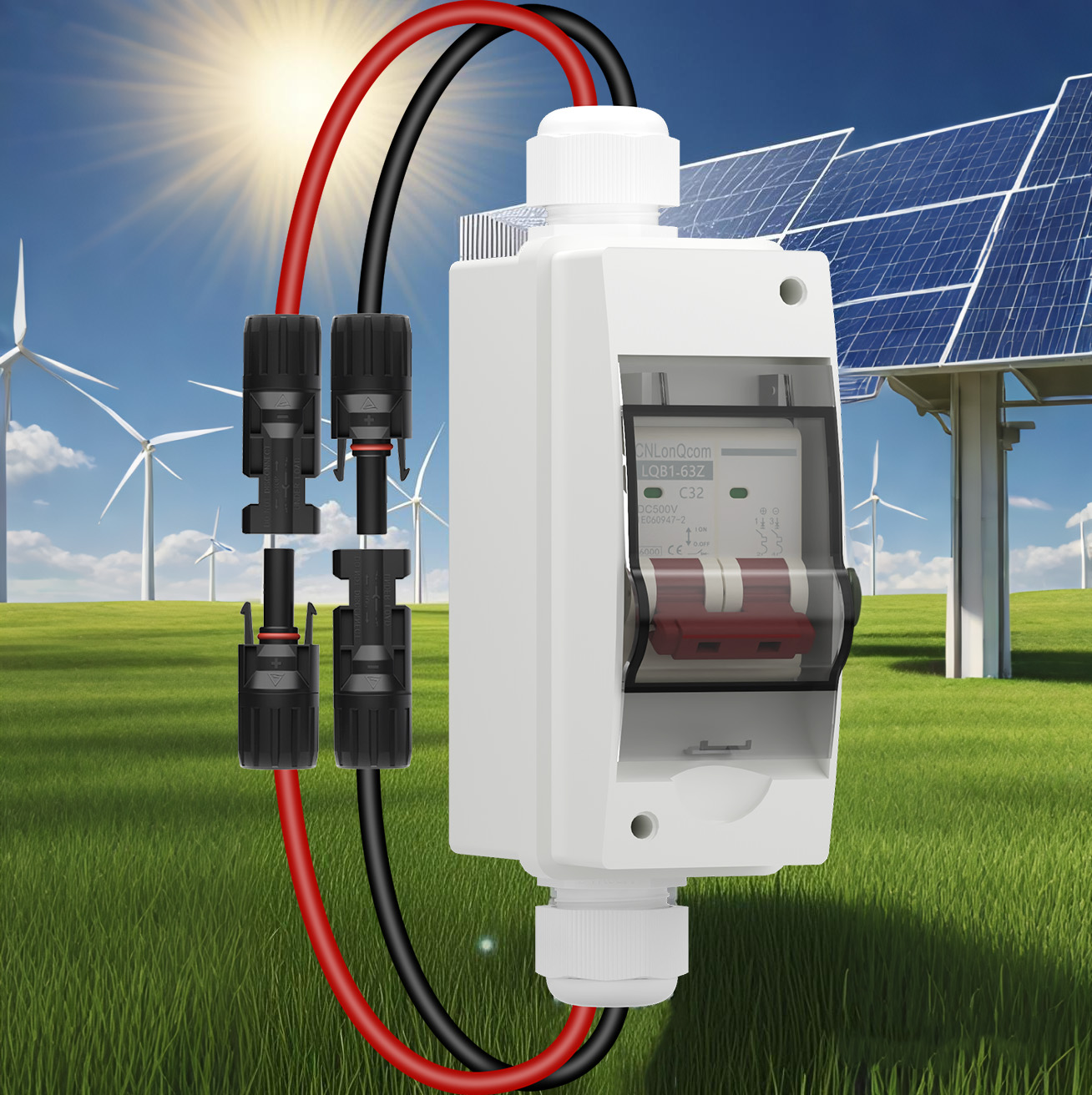
- English
- Español
- Português
- русский
- Français
- 日本語
- Deutsch
- tiếng Việt
- Italiano
- Nederlands
- ภาษาไทย
- Polski
- 한국어
- Svenska
- magyar
- Malay
- বাংলা ভাষার
- Dansk
- Suomi
- हिन्दी
- Pilipino
- Türkçe
- Gaeilge
- العربية
- Indonesia
- Norsk
- تمل
- český
- ελληνικά
- український
- Javanese
- فارسی
- தமிழ்
- తెలుగు
- नेपाली
- Burmese
- български
- ລາວ
- Latine
- Қазақша
- Euskal
- Azərbaycan
- Slovenský jazyk
- Македонски
- Lietuvos
- Eesti Keel
- Română
- Slovenski
- मराठी
- Srpski језик
The Critical Role of Circuit Breakers in Photovoltaic Systems
2025-06-30
With the increasing global demand for renewable energy, photovoltaic (solar) power generation systems have been widely adopted due to their clean and sustainable nature. In PV systems, electrical safety is of paramount importance, and circuit breakers, as key protective devices, play an indispensable role in ensuring stable operation and preventing electrical faults. This article explores the importance, functions, and selection criteria of circuit breakers in PV systems.
1. The Role of Circuit Breakers in PV Systems
1.1 Overload Protection
During operation, PV systems may experience current exceeding rated values due to factors such as fluctuations in sunlight intensity, aging components, or sudden load changes. Circuit breakers can detect such overload conditions and promptly interrupt the circuit, preventing wire overheating, equipment damage, or even fire hazards.
1.2 Short-Circuit Protection
Short circuits in PV systems may result from insulation damage, wiring errors, or equipment failure, with short-circuit currents reaching several times or even dozens of times the normal current. Circuit breakers can disconnect the circuit within milliseconds, protecting system components (e.g., inverters, batteries, PV modules) from damage.
1.3 Isolation and Maintenance Safety
During system maintenance or inspection, circuit breakers serve as manual switches to cut off the circuit, ensuring operator safety. They also provide a clear disconnection point for fault diagnosis.
1.4 Protection for DC and AC Circuits
PV systems consist of a DC side (solar panels to inverters) and an AC side (inverters to the grid or loads). Since DC lacks a zero-crossing point, arc extinguishing is more challenging than with AC. Therefore, DC circuit breakers require special design, while AC circuit breakers are mainly used for inverter outputs and grid connection protection.
2. Key Considerations for Selecting Circuit Breakers in PV Systems
2.1 Rated Voltage and Current
The circuit breaker's rated voltage must exceed the PV system's maximum operating voltage (e.g., 1000V or 1500V DC systems).
The rated current should be slightly higher than the system's maximum continuous current, accounting for temperature and environmental factors.
2.2 Differences Between DC and AC Circuit Breakers
DC Circuit Breakers: Require stronger arc-extinguishing capabilities to handle persistent DC arcs.
AC Circuit Breakers: Used on the inverter output side and must comply with grid interconnection standards.
2.3 Breaking Capacity
PV systems can generate high currents during short circuits. The circuit breaker's breaking capacity (e.g., 10kA, 20kA) must be sufficient to safely interrupt fault currents.
2.4 Environmental Adaptability
Since PV systems are typically installed outdoors, circuit breakers must feature dustproof, waterproof, and high-temperature-resistant designs for long-term reliability.
3. Common Types of Circuit Breakers
3.1 DC Circuit Breakers
Used for solar arrays and inverter inputs, such as miniature circuit breakers (MCBs), fuses, or specialized PV DC circuit breakers.
Some models include reverse-polarity protection to prevent backfeed currents.
3.2 AC Circuit Breakers
Applied on the inverter output side, such as molded case circuit breakers (MCCBs) or air circuit breakers (ACBs).
Must meet certification standards like UL or IEC.
4. Common Causes of Circuit Breaker Failures and Preventive Measures
4.1 Nuisance Tripping
Causes: Overloads, short circuits, improper selection, or aging.
Solutions: Proper sizing, regular testing, and avoiding overloading.
4.2 Contact Erosion
Causes: Frequent switching, poor contact, or arcing.
Solutions: Use high-quality circuit breakers and minimize unnecessary operations.
4.3 Environmental Impact
Causes: High temperatures, humidity, or dust degrading performance.
Solutions: Select circuit breakers with higher protection ratings (e.g., IP65) and perform routine maintenance.
5. Conclusion
Circuit breakers are not only protective barriers for PV systems but also critical components ensuring safe and stable operation. Proper selection, correct installation, and regular maintenance can significantly reduce electrical risks, extend equipment lifespan, and enhance overall system efficiency. As PV technology advances, future circuit breakers will evolve toward higher performance and smarter functionalities, providing stronger safeguards for renewable energy systems.




